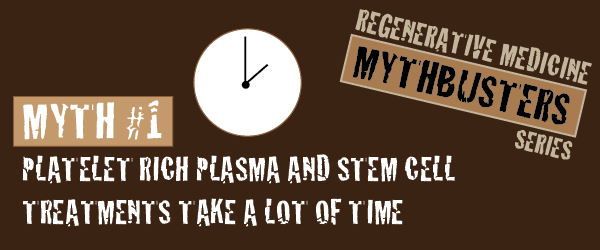Learn tips about Class IV laser therapy and other health related topics on the Companion Therapy Lasers blog! Check back weekly for updated posts.
Icing an area after tissue trauma is one of the longest standing forms of physical therapy available to canine patients. In addition to icing, combining it with compression helps take cryotherapy to a whole other level of efficacy. Let’s take a look at what icing with compression can do for your patients.
Cold
Applying cold to a dog’s skin for approximately 20 minutes reduces blood flow, thus decreasing tissue damage and increasing analgesia. It is most effective within the first 72 hours after injury due to surgery or trauma but can also be utilized with chronic issues such as arthritis. Some methods of delivery for cryotherapy include ice packs, cold baths and frozen gel packs.
Compression
Compressing the tissue around an area that has been injured aids in decreasing the amount of edema that can accumulate. Minimizing the swelling will make the patient more comfortable, thus improving mobility earlier for a speedier recovery. The types of compression that are available are static compression, utilizing bandages or wraps that stay in place, and/or intermittent pneumatic compression, utilizing wraps that cycle between inflating and deflating for a period of time.
Combination
Combining the efforts of compression with icing allows the pet to get the best of both worlds. The alternating expanding and contracting motion of the wrap creates a massage effect for the area being treated in addition to helping concentrate the cold around the entire area. And, an added benefit of the cold compression blend is that oxygenated blood gets pumped into the injured tissue to enhance healing as well. This method works by attaching a wrap, with icing capabilities, to a pump that will rotate between inflating and deflating over time.
The effects of icing and compression provide excellent benefits for pain management and range of motion post-surgery or injury. Decrease pain, improve exercise, and heal injuries faster when combining cryotherapy with compressive therapy for canine patients. Learn more about post-surgical use of this technology in the video below.
In the veterinary hospital, a major component revolving around the integration of a new therapy is time. How long is the treatment going to take? How many personnel will need to be scheduled to administer the therapy? How long does the patient need to be under sedation (if needed)? How long does the patient need to be in recovery?
The old saying “time is money” certainly has its place in the veterinary hospital. If a procedure requires several technicians and takes numerous hours to perform for treating one patient, that may not be an efficient use of the hospital’s or technician’s time. In the early years of regenerative medicine, many of the therapies required numerous anesthetic episodes and several hours of both the technician’s and doctor’s time. The procedures required a dog to be anesthetized to collect the sample and then return in a separate hospital visit to be administered the therapy. The collection of the tissue and administration required the doctor to be scheduled for two surgical procedures as well as the attending technician(s). In total, the time to perform this therapy could easily approach 2 hours of doctor and technician time combined, which would then necessitate a higher fee for the single therapy to cover the overhead costs. For many customers, the combination of the numerous office visits and cost of the procedures would be prohibitive, making this therapy less appealing.
Today, these therapies have become extremely efficient only requiring a single office visit with processing and administration taking less than 30 minutes. For Platelet Rich Plasma (PRP) the process takes even less time (typically 15 minutes from start to finish) with most of the procedure being performed by the attending technician(s). The steps for processing PRP are quite simple, making it a therapy that can be easily cross-trained for the supporting staff. The doctor’s time is only required for the administration of the therapy, which takes less than 2-3 minutes (depending on the number of areas being injected). With this minimal time requirement, providing regenerative therapies can easily be scheduled in-between other procedures, exams or surgeries.
To hear a first-hand account of how the Companion Regenerative Therapies System benefited a general practice and their schedule:
Stay tuned for our next blog post where we “bust” another regenerative medicine myth!
Cats can be challenging to treat in most hospital settings – but not when it comes to laser therapy. The non-invasive approach and soothing application lend themselves to the fear-free practice. Oftentimes, a feline patient will actually start to purr, knead, and press into the treatment head attachment, showing relief and pleasure.
Typically, the feline patient will be more relaxed on an elevated position, possibly incorporating a semi-open bedding area. This can be as simple as the cat carrier with the top removed on an exam table. Or, it could be a series of small cat trees with platforms around the treatment room.
Creating a therapeutic setting also includes things such as natural/soft lighting, white noise, pheromone dispenser, etc. A thick fleece bedding is very comfortable, promotes kneading, and encourages the patient to ease into the treatment. Unless when dealing with a condition around the face, mouth, or ears, most cats actually tolerate laser-safe Doggles well and they seem to have a soothing/calming effect.
The laser operator may also choose to use distraction techniques, like placing catnip on a surface or object, or anything else smelly and tasty, like a dollop of LaxAire or baby food on a tongue depressor. Another distraction technique would be the operator starting by giving a neck massage prior to working on the painful tissues themselves.
Although feline patients can be challenging to work with, this is typically not a concern when dealing with laser therapy, the vast majority of these patients will habituate very quickly. The adept laser operator will consider some of the above techniques to minimize the patient’s stress and provide for a fear-free therapeutic treatment atmosphere.




